TiO2 Nanoparticles Obtained by Laser Sintering When Added to Methacrylate Photopolymer Resin Improve Its Physicochemical Characteristics and Impart Antibacterial Properties
Abstract
1. Introduction
2. Results
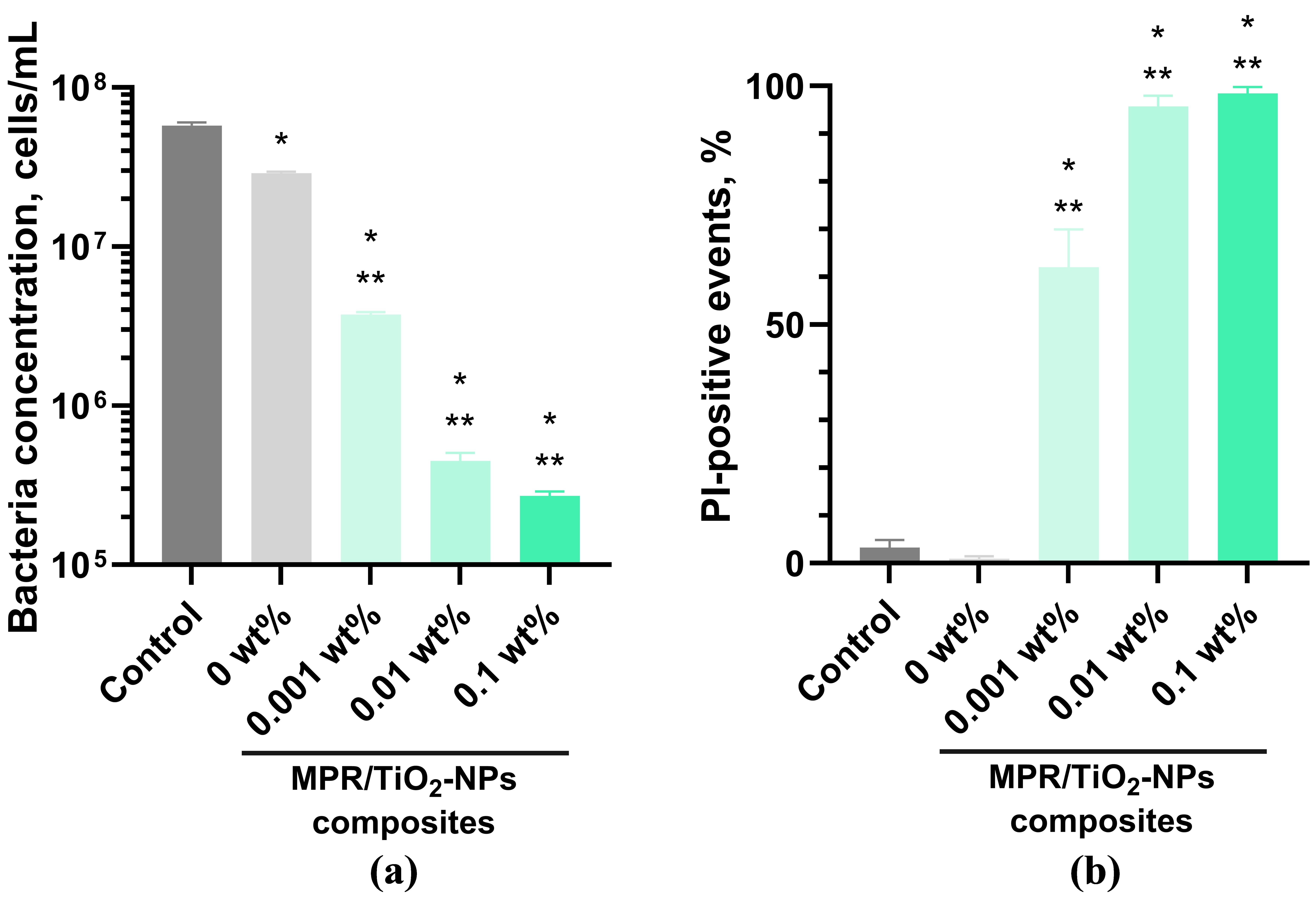
3. Discussion
4. Materials and Methods
4.1. Synthesis of TiO2 Nanoparticles (TiO2-NPs)
4.2. Characterization of TiO2-NPs
4.3. Preparation of TiO2-NPs Modified Photopolymer Resin (MPR/TiO2-NPs)
4.4. Additive Manufacturing of MPR/TiO2-NPs Composite Material Samples
4.5. Methods for Characterization of Composite Materials Printed from MPR/TiO2-NPs
4.6. Quantitative Assessment of the Formed ROS in Aqueous Solutions (H2O2 and •OH)
4.7. Quantitative Determination of 8-Oxoguanine in DNA and Long-Lived Reactive Protein Species (LRPS)
4.8. E. coli Growth Curves
4.9. Evaluation of Antibacterial Activity by Flow Cytofluorometry
4.10. Cytotoxicity Assessment In Vitro
4.11. Statistical Data Analysis and Visualization
5. Conclusions
Author Contributions
Funding
Institutional Review Board Statement
Informed Consent Statement
Data Availability Statement
Acknowledgments
Conflicts of Interest
Abbreviations
| ROS | Reactive Oxygen Species |
| LRPS | Long-lived Reactive Protein Species |
| OD | Optical Density |
| PI | Propidium Iodide |
| TiO2-NPs | Titanium oxide nanoparticles |
| MPR | Methacrylate-like Photopolymer Resin |
| MSLA | Masked Stereolithography Apparatus |
References
- Che Ab Rahman, A.; Lee, B.-J.; Lim, S. Optimizing polymethyl methacrylate (PMMA)-based stretchable microneedle arrays by vat photopolymerization for efficient drug loading. Addit. Manuf. 2024, 94, 104472. [Google Scholar] [CrossRef]
- Yüceer, Ö.M.; Kaynak Öztürk, E.; Çiçek, E.S.; Aktaş, N.; Bankoğlu Güngör, M. Three-Dimensional-Printed Photopolymer Resin Materials: A Narrative Review on Their Production Techniques and Applications in Dentistry. Polymers 2025, 17, 316. [Google Scholar] [CrossRef]
- Saramet, V.; Stan, M.S.; Ripszky Totan, A.; Țâncu, A.M.C.; Voicu-Balasea, B.; Enasescu, D.S.; Rus-Hrincu, F.; Imre, M. Analysis of Gingival Fibroblasts Behaviour in the Presence of 3D-Printed versus Milled Methacrylate-Based Dental Resins—Do We Have a Winner? J. Funct. Biomater. 2024, 15, 147. [Google Scholar] [CrossRef]
- Zhou, Z.-X.; Hu, W.; Zhao, Z.; Fu, H. Photochemically Driven Polymeric Biocompatible and Antimicrobial Thiol–Acrylate Nanocomposite Suitable for Dental Restoration. ACS Appl. Mater. Interfaces 2022, 14, 46313–46323. [Google Scholar] [CrossRef]
- Manoukakis, T.; Nikolaidis, A.K.; Koulaouzidou, E.A. Polymerization kinetics of 3D-printed orthodontic aligners under different UV post-curing conditions. Prog. Orthod. 2024, 25, 42. [Google Scholar] [CrossRef]
- Zhao, Y.; Wang, Z.; Zhao, J.; Hussain, M.; Wang, M. Additive Manufacturing in Orthopedics: A Review. ACS Biomater. Sci. Eng. 2022, 8, 1367–1380. [Google Scholar] [CrossRef]
- Onderková, A.; Kalaskar, D.M. 3D bioprinting for auricular reconstruction: A review and future perspectives. Int. J. Bioprinting 2023, 9, 0898. [Google Scholar] [CrossRef]
- Alrahlah, A.; Fouad, H.; Hashem, M.; Niazy, A.A.; AlBadah, A. Titanium Oxide (TiO2)/Polymethylmethacrylate (PMMA) Denture Base Nanocomposites: Mechanical, Viscoelastic and Antibacterial Behavior. Materials 2018, 11, 1096. [Google Scholar] [CrossRef]
- Gad, M.M.; Abualsaud, R. Behavior of PMMA Denture Base Materials Containing Titanium Dioxide Nanoparticles: A Literature Review. Int. J. Biomater. 2019, 2019, 6190610. [Google Scholar] [CrossRef]
- Mhaibes, A.H.; Safi, I.N.; Haider, J. The influence of the addition of titanium oxide nanotubes on the properties of 3D printed denture base materials. J. Esthet. Restor. Dent. 2024, 36, 1574–1590. [Google Scholar] [CrossRef]
- Chen, S.; Yang, J.; Li, K.; Lu, B.; Ren, L. Carboxylic acid-functionalized TiO2 nanoparticle-loaded PMMA/PEEK copolymer matrix as a dental resin for 3D complete denture manufacturing by stereolitographic technique. Int. J. Food Prop. 2018, 21, 2557–2565. [Google Scholar] [CrossRef]
- Mohr, L.C.; Capelezzo, A.P.; Baretta, C.R.D.M.; Martins, M.A.P.M.; Fiori, M.A.; Mello, J.M.M. Titanium dioxide nanoparticles applied as ultraviolet radiation blocker in the polylactic acid bidegradable polymer. Polym. Test. 2019, 77, 105867. [Google Scholar] [CrossRef]
- Cazan, C.; Enesca, A.; Andronic, L. Synergic Effect of TiO2 Filler on the Mechanical Properties of Polymer Nanocomposites. Polymers 2021, 13, 2017. [Google Scholar] [CrossRef] [PubMed]
- Zuniga, J.M. 3D Printed Antibacterial Prostheses. Appl. Sci. 2018, 8, 1651. [Google Scholar] [CrossRef]
- Marin, E.; Boschetto, F.; Zanocco, M.; Honma, T.; Zhu, W.; Pezzotti, G. Explorative study on the antibacterial effects of 3D-printed PMMA/nitrides composites. Materials & Design 2021, 206, 109788. [Google Scholar] [CrossRef]
- Serov, D.A.; Gritsaeva, A.V.; Yanbaev, F.M.; Simakin, A.V.; Gudkov, S.V. Review of Antimicrobial Properties of Titanium Dioxide Nanoparticles. Int. J. Mol. Sci. 2024, 25, 10519. [Google Scholar] [CrossRef]
- Manimaran, K.; Loganathan, S.; Prakash, D.G.; Natarajan, D. Antibacterial and anticancer potential of mycosynthesized titanium dioxide (TiO2) nanoparticles using Hypsizygus ulmarius. Biomass Convers. Biorefinery 2022, 14, 13293–13301. [Google Scholar] [CrossRef]
- Dilika, M.D.; Fanta, G.M.; Tański, T. Green Synthesis of Titanium Dioxide Nanoparticles Using Maerua oblongifolia Root Bark Extract: Photocatalytic Degradation and Antibacterial Activities. Materials 2024, 17, 5835. [Google Scholar] [CrossRef]
- Bano, F. Green-Synthesized Titanium Dioxide Nanoparticles Inhibit and Eradicate the Biofilms of Pathogenic Bacteria Through Intracellular ROS Production. Microbiol. Res. 2025, 16, 48. [Google Scholar] [CrossRef]
- Nosrati, H.; Heydari, M. Titanium dioxide nanoparticles: A promising candidate for wound healing applications. Burn. Trauma 2025, 13, tkae069. [Google Scholar] [CrossRef]
- Zuo, F.; Zhu, Y.; Wu, T.; Li, C.; Liu, Y.; Wu, X.; Ma, J.; Zhang, K.; Ouyang, H.; Qiu, X.; et al. Titanium Dioxide Nanomaterials: Progress in Synthesis and Application in Drug Delivery. Pharmaceutics 2024, 16, 1214. [Google Scholar] [CrossRef] [PubMed]
- Goto, T.; Tanabe, R.; Shibuya, H.; Tamura, M.; Nomura, S.; Chen, J.-C. Visualization of Small Vessels by Micro–Computed Tomography Using Titanium Dioxide Nanoparticles as a Novel Contrast Agent. Int. J. Biomed. Imaging 2025, 2025, 6688558. [Google Scholar] [CrossRef]
- Picolotto, A.; Rossa Beltrami, L.V.; Dallé, D.; Ornaghi Júnior, H.L.; Zattera, A.J.; Catto, A.L.; Borsoi, C. Development and evaluation of biodegradable starch-based films containing cellulose nanocrystals/titanium dioxide nanoparticles as an alternative for food packaging. J. Thermoplast. Compos. Mater. 2023, 37, 1991–2012. [Google Scholar] [CrossRef]
- Wang, J.; Cheng, Y.; Li, S.; Liu, B.; Yang, L.; Geng, F.; Xie, S.; Qi, R.; Zhang, Y.; Liu, D.; et al. Enhanced properties of gelatin films incorporated with TiO2-loaded reduced graphene oxide aerogel microspheres for active food packaging applications. Int. J. Biol. Macromol. 2024, 261, 129772. [Google Scholar] [CrossRef]
- Chandoliya, R.; Sharma, S.; Sharma, V.; Joshi, R.; Sivanesan, I. Titanium Dioxide Nanoparticle: A Comprehensive Review on Synthesis, Applications and Toxicity. Plants 2024, 13, 2964. [Google Scholar] [CrossRef]
- Gojzewski, H.; Guo, Z.; Grzelachowska, W.; Ridwan, M.G.; Hempenius, M.A.; Grijpma, D.W.; Vancso, G.J. Layer-by-Layer Printing of Photopolymers in 3D: How Weak is the Interface? ACS Appl. Mater. Interfaces 2020, 12, 8908–8914. [Google Scholar] [CrossRef]
- Rao, J.P.; Geckeler, K.E. Polymer nanoparticles: Preparation techniques and size-control parameters. Prog. Polym. Sci. 2011, 36, 887–913. [Google Scholar] [CrossRef]
- Beach, M.A.; Nayanathara, U.; Gao, Y.; Zhang, C.; Xiong, Y.; Wang, Y.; Such, G.K. Polymeric Nanoparticles for Drug Delivery. Chem. Rev. 2024, 124, 5505–5616. [Google Scholar] [CrossRef]
- Georgeous, J.; AlSawaftah, N.; Abuwatfa, W.H.; Husseini, G.A. Review of Gold Nanoparticles: Synthesis, Properties, Shapes, Cellular Uptake, Targeting, Release Mechanisms and Applications in Drug Delivery and Therapy. Pharmaceutics 2024, 16, 1332. [Google Scholar] [CrossRef]
- Baimler, I.V.; Simakin, A.V.; Dorokhov, A.S.; Gudkov, S.V. Mini-review on laser-induced nanoparticle heating and melting. Front. Chem. 2024, 12, 1463612. [Google Scholar] [CrossRef]
- Amendola, V.; Meneghetti, M. Laser ablation synthesis in solution and size manipulation of noble metal nanoparticles. Phys. Chem. Chem. Phys. 2009, 11, 3805–3821. [Google Scholar] [CrossRef] [PubMed]
- Zhang, J.; Claverie, J.; Chaker, M.; Ma, D. Colloidal Metal Nanoparticles Prepared by Laser Ablation and their Applications. ChemPhysChem 2017, 18, 986–1006. [Google Scholar] [CrossRef] [PubMed]
- ISO 179-1:2010; Plastics—Determination of Charpy Impact Properties—Part 1: Non-Instrumented Impact Test. ISO: Geneva, Switzerland, 2010.
- ISO 527-2:2012; Plastics–Determination of Tensile Properties. ISO: Geneva, Switzerland, 2012.
- ASTM D790; Standard Test Methods for Flexural Properties of Unreinforced and Reinforced Plastics and Electrical Insulating Materials. ASTM Intemational: West Conshohocken, PA, USA, 1997.
- ASTM D638-14; Standard Test Method for Tensile Properties of Plastics. ASTM International: West Conshohocken, PA, USA, 1998.
- Arora, B.; Murar, M.; Dhumale, V. Antimicrobial potential of TiO2 nanoparticles against MDRPseudomonas aeruginosa. J. Exp. Nanosci. 2014, 10, 819–827. [Google Scholar] [CrossRef]
- Ul-Hamid, A.; Baig, N.; Haider, A.; Hakeem, A.S.; Ikram, M. Using biologically synthesized TiO2 nanoparticles as potential remedy against multiple drug resistant Staphylococcus aureus of bovine mastitis. Sci. Rep. 2023, 13, 18785. [Google Scholar] [CrossRef]
- Thakur, N.; Thakur, N.; Kumar, A.; Thakur, V.K.; Kalia, S.; Arya, V.; Kumar, A.; Kumar, S.; Kyzas, G.Z. A critical review on the recent trends of photocatalytic, antibacterial, antioxidant and nanohybrid applications of anatase and rutile TiO2 nanoparticles. Sci. Total. Environ. 2024, 914, 169815. [Google Scholar] [CrossRef]
- Thuc, D.Q.; Mai, Q.-D.; Son, N.A.; Nguyen, H.A.; Pham, A.-T.; Le, A.-T. Superior UV Resistance of Unsaturated Polyester Resin by Employing Amorphous e-TiO2 Nanoparticles for Outdoor Applications. ACS Appl. Polym. Mater. 2024, 6, 3179–3191. [Google Scholar] [CrossRef]
- Shabalina, A.V.; Kozlov, V.A.; Popov, I.A.; Gudkov, S.V. A Review on Recently Developed Antibacterial Composites of Inorganic Nanoparticles and Non-Hydrogel Polymers for Biomedical Applications. Nanomaterials 2024, 14, 1753. [Google Scholar] [CrossRef]
- Eren, O.; Yüksel, N.; Şahin, İ. Investigation of mechanical and electrical properties of photopolymer nanocomposites reinforced with carbon-based nanoparticles produced by digital light processing 3D printing technique. Polym. Compos. 2024, 46, 4729–4742. [Google Scholar] [CrossRef]
- Lee, T.; Ng, C.S.; Su, P.-C. Warpage correction for vat photopolymerization 3D printing. Addit. Manuf. 2025, 102, 104740. [Google Scholar] [CrossRef]
- Bangera, M.K.; Kotian, R.; Ravishankar , N. Effect of titanium dioxide nanoparticle reinforcement on flexural strength of denture base resin: A systematic review and meta-analysis. Jpn. Dent. Sci. Rev. 2020, 56, 68–76. [Google Scholar] [CrossRef]
- Shirkavand, S.; Moslehifard, E. Effect of TiO2 Nanoparticles on Tensile Strength of Dental Acrylic Resins. J. Dent. Res. Dent. Clin. Dent. Prospect. 2014, 8, 197–203. [Google Scholar] [CrossRef]
- Rahman, M.M.; Khan, K.H.; Parvez, M.M.H.; Irizarry, N.; Uddin, M.N. Polymer Nanocomposites with Optimized Nanoparticle Dispersion and Enhanced Functionalities for Industrial Applications. Processes 2025, 13, 994. [Google Scholar] [CrossRef]
- Cascione, M.; De Matteis, V.; Pellegrino, P.; Albanese, G.; De Giorgi, M.L.; Paladini, F.; Corsalini, M.; Rinaldi, R. Improvement of PMMA Dental Matrix Performance by Addition of Titanium Dioxide Nanoparticles and Clay Nanotubes. Nanomaterials 2021, 11, 2027. [Google Scholar] [CrossRef] [PubMed]
- Liang, Y.; Wei, X.; Peng, Y.; Wang, X.; Niu, X. A review on recent applications of machine learning in mechanical properties of composites. Polym. Compos. 2024, 46, 1939–1960. [Google Scholar] [CrossRef]
- Liu, Y.; Wang, Z.; Liu, X.; Chen, H.; Huang, Y.; Li, A.; Pu, Y.; Guo, L. Study on Mechanical Properties, Optical Properties, Cytotoxicity of TiO2-HAP Nanoparticles-Modified PMMA and Photodynamically Assisted Antibacterial Activity Against Candida Albicans in Vitro. Int. J. Nanomed. 2025, 20, 2695–2709. [Google Scholar] [CrossRef]
- Shayan, M.; Jung, Y.; Huang, P.-S.; Moradi, M.; Plakseychuk, A.Y.; Lee, J.-K.; Shankar, R.; Chun, Y. Improved osteoblast response to UV-irradiated PMMA/TiO2 nanocomposites with controllable wettability. J. Mater. Sci. Mater. Med. 2014, 25, 2721–2730. [Google Scholar] [CrossRef]
- Ramakrishna, S.; Mayer, J.; Wintermantel, E.; Leong, K.W. Biomedical applications of polymer-composite materials: A review. Compos. Sci. Technol. 2001, 61, 1189–1224. [Google Scholar] [CrossRef]
- Songpanit, M.; Boonyarattanakalin, K.; Limwichean, S.; Lertvanithphol, T.; Horprathum, M.; Pecharapa, W.; Mekprasart, W. Structural and Optical Characterizations of Polymethyl Methacrylate Films with the Incorporation of Ultrafine SiO2/TiO2 Composites Utilized as Self-Cleaning Surfaces. Polymers 2023, 15, 3162. [Google Scholar] [CrossRef]
- Ignatyev, P.S.; Indukaev, K.V.; Osipov, P.A.; Sergeev, I.K. Laser Interference Microscopy for Nanobiotechnologies. Biomed. Eng. 2013, 47, 32–35. [Google Scholar] [CrossRef]
- Arrachart, G.; Karatchevtseva, I.; Heinemann, A.; Cassidy, D.J.; Triani, G. Synthesis and characterisation of nanocomposite materials prepared by dispersion of functional TiO2 nanoparticles in PMMA matrix. J. Mater. Chem. 2011, 21, 13040–13046. [Google Scholar] [CrossRef]
- Azmy, E.; Al-kholy, M.R.Z.; Al-Thobity, A.M.; Gad, M.M.; Helal, M.A.; Chen, W.-C. Comparative Effect of Incorporation of ZrO2, TiO2, and SiO2 Nanoparticles on the Strength and Surface Properties of PMMA Denture Base Material: An In Vitro Study. Int. J. Biomater. 2022, 2022, 1–10. [Google Scholar] [CrossRef]
- Feng, J.; Venna, S.R.; Hopkinson, D.P. Interactions at the interface of polymer matrix-filler particle composites. Polymer 2016, 103, 189–195. [Google Scholar] [CrossRef]
- Takeda, M.; Tanabe, E.; Iwaki, T.; Yabuki, A.; Okuyama, K. High-concentration Transparent TiO2 Nanocomposite Films Prepared from TiO2 Nanoslurry Dispersed by Using Bead Mill. Polym. J. 2008, 40, 694–699. [Google Scholar] [CrossRef]
- Lu, K. Hybrid materials—A review on co-dispersion, processing, patterning, and properties. Int. Mater. Rev. 2019, 65, 463–501. [Google Scholar] [CrossRef]
- Charpentier, P.A.; Burgess, K.; Wang, L.; Chowdhury, R.R.; Lotus, A.F.; Moula, G. Nano-TiO2/polyurethane composites for antibacterial and self-cleaning coatings. Nanotechnology 2012, 23, 425606. [Google Scholar] [CrossRef]
- Chen, X. Preparation and property of TiO2 nanoparticle dispersed polyvinyl alcohol composite materials. J. Mater. Sci. Lett. 2002, 21, 1637–1639. [Google Scholar] [CrossRef]
- Byrne, M.T.; McCarthy, J.E.; Bent, M.; Blake, R.; Gun’ko, Y.K.; Horvath, E.; Konya, Z.; Kukovecz, A.; Kiricsi, I.; Coleman, J.N. Chemical functionalisation of titania nanotubes and their utilisation for the fabrication of reinforced polystyrene composites. J. Mater. Chem. 2007, 17, 2351–2358. [Google Scholar] [CrossRef]
- Hasan, M.K.; Khan, M.S.; Hossain, M.S.; Dutta, S.K.; Dhar, P.K.; Kawaguchi, S. Polymer encapsulation of TiO2 by seeded emulsion polymerization to improve the dispersion stability and reflectance. Colloids Surf. A Physicochem. Eng. Asp. 2025, 709, 136185. [Google Scholar] [CrossRef]
- Hanemann, T.; Szabó, D.V. Polymer-Nanoparticle Composites: From Synthesis to Modern Applications. Materials 2010, 3, 3468–3517. [Google Scholar] [CrossRef]
- Nawaz, H.; Umar, M.; Maryam, R.; Nawaz, I.; Razzaq, H.; Malik, T.; Liu, X. Polymer Nanocomposites Based on TiO2as a Reinforcing Agent: An Overview. Adv. Eng. Mater. 2022, 24, 2200844. [Google Scholar] [CrossRef]
- Wang, C.; Mao, H.; Wang, C.; Fu, S. Dispersibility and Hydrophobicity Analysis of Titanium Dioxide Nanoparticles Grafted with Silane Coupling Agent. Ind. Eng. Chem. Res. 2011, 50, 11930–11934. [Google Scholar] [CrossRef]
- Fonseca, C.; Ochoa, A.; Ulloa, M.T.; Alvarez, E.; Canales, D.; Zapata, P.A. Poly(lactic acid)/TiO2 nanocomposites as alternative biocidal and antifungal materials. Mater. Sci. Eng. C 2015, 57, 314–320. [Google Scholar] [CrossRef]
- Gziut, K.; Kowalczyk, A.; Schmidt, B.; Idzik, T.J.; Sośnicki, J.G. Influence of Methacrylate and Vinyl Monomers on Radical Bulk Photopolymerization Process and Properties of Epoxy-Acrylate Structural Adhesives. Polymers 2023, 15, 926. [Google Scholar] [CrossRef] [PubMed]
- Leggat, P.A.; Kedjarune, U. Toxicity of methyl methacrylate in dentistry. Int. Dent. J. 2003, 53, 126–131. [Google Scholar] [CrossRef]
- Mohammadi, N.B.; Gerdroudbar, A.E.; Rezazadeh, H.; Mishra, M.K. Plastics and Their Toxicity: Bisphenol A, Phthalate, and Acrylic Monomers for Dental and Pharmaceutical Applications. In Plastics and Their Toxicity: Bisphenol A, Phthalate, and Acrylic Monomers for Dental and Pharmaceutical Applications; CRC Press: Boca Raton, FL, USA, 2025. [Google Scholar]
- Rudenko, Y.; Lozovaya, A.; Asanova, L.; Fedyakova, N.; Chapala, P. Light intensity influence on critical energy and penetration depth for vat photopolymerization technology. Prog. Addit. Manuf. 2023, 9, 553–561. [Google Scholar] [CrossRef]
- Peng, X.; Zhang, J.; Xiao, P. Photopolymerization Approach to Advanced Polymer Composites: Integration of Surface-Modified Nanofillers for Enhanced Properties. Adv. Mater. 2024, 36, e2400178. [Google Scholar] [CrossRef]
- Shah, M.; Ullah, A.; Azher, K.; Rehman, A.U.; Juan, W.; Aktürk, N.; Tüfekci, C.S.; Salamci, M.U. Vat photopolymerization-based 3D printing of polymer nanocomposites: Current trends and applications. RSC Adv. 2023, 13, 1456–1496. [Google Scholar] [CrossRef]
- Armentia, S.L.d.; Fernández-Villamarín, S.; Ballesteros, Y.; C. del Real, J.; Dunne, N.; Paz, E. 3D Printing of a Graphene-Modified Photopolymer Using Stereolithography for Biomedical Applications: A Study of the Polymerization Reaction. Int. J. Bioprinting 2022, 8, 182–197. [Google Scholar] [CrossRef]
- Cui, W.; Liu, J.; You, W.; Yu, W. Mechanical reinforcement by bridging chains in polymer nanocomposites. Polymer 2024, 306, 127208. [Google Scholar] [CrossRef]
- Melinte, V.; Buruiana, T.; Rosca, I.; Chibac, A.L. TiO2-Based Photopolymerized Hybrid Catalysts with Visible Light Catalytic Activity Induced by In Situ Generated Ag/Au NPs. ChemistrySelect 2019, 4, 5138–5149. [Google Scholar] [CrossRef]
- Naor, T.; Gigi, S.; Waiskopf, N.; Jacobi, G.; Shoshani, S.; Kam, D.; Magdassi, S.; Banin, E.; Banin, U. ZnO Quantum Photoinitiators as an All-in-One Solution for Multifunctional Photopolymer Nanocomposites. ACS Nano 2023, 17, 20366–20375. [Google Scholar] [CrossRef]
- Bailey, E.J.; Winey, K.I. Dynamics of polymer segments, polymer chains, and nanoparticles in polymer nanocomposite melts: A review. Prog. Polym. Sci. 2020, 105, 101242. [Google Scholar] [CrossRef]
- Mohammadi, H.; Moradpoor, H.; Beddu, S.; Mozaffari, H.R.; Sharifi, R.; Rezaei, R.; Fallahnia, N.; Ebadi, M.; Mazlan, S.A.; Safaei, M. Current trends and research advances on the application of TiO2 nanoparticles in dentistry: How far are we from clinical translation? Heliyon 2025, 11, e42169. [Google Scholar] [CrossRef] [PubMed]
- Sun, J.; Watson, S.S.; Allsopp, D.A.; Stanley, D.; Skrtic, D. Tuning photo-catalytic activities of TiO2 nanoparticles using dimethacrylate resins. Dent. Mater. 2016, 32, 363–372. [Google Scholar] [CrossRef] [PubMed]
- Maher, M.A.; Becker-Willinger, C.; Chiao, J.-C.; Schmitz-Stöwe, S.; Bentz, D.; Resnick, P.J.; Veith, M. Kinetic investigations on TiO2 nanoparticles as photo initiators for UV-polymerization in acrylic matrix. In Proceedings of the Micromachining and Microfabrication Process Technology XV, San Francisco, CA, USA, 26 January 2010. [Google Scholar]
- Rocheva, V.V.; Koroleva, A.V.; Savelyev, A.G.; Khaydukov, K.V.; Generalova, A.N.; Nechaev, A.V.; Guller, A.E.; Semchishen, V.A.; Chichkov, B.N.; Khaydukov, E.V. High-resolution 3D photopolymerization assisted by upconversion nanoparticles for rapid prototyping applications. Sci. Rep. 2018, 8, 3663. [Google Scholar] [CrossRef]
- Benites, A.B.; Alarcon, R.T.; Gaglieri, C.; Lamb, K.J.; Bannach, G. Effect of metal oxide fillers in urethane dimethacrylate polymer with glycerol obtained by photopolymerization synthesis. J. Polym. Res. 2020, 27, 311. [Google Scholar] [CrossRef]
- Dube, E. Antimicrobial Photodynamic Therapy: Self-Disinfecting Surfaces for Controlling Microbial Infections. Microorganisms 2024, 12, 1573. [Google Scholar] [CrossRef]
- Tauffenberger, A.; Magistretti, P.J. Reactive Oxygen Species: Beyond Their Reactive Behavior. Neurochem. Res. 2021, 46, 77–87. [Google Scholar] [CrossRef]
- Sharapov, M.G.; Gudkov, S.V.; Lankin, V.Z. Hydroperoxide-Reducing Enzymes in the Regulation of Free-Radical Processes. Biochemistry 2021, 86, 1256–1274. [Google Scholar] [CrossRef]
- Gudkov, S.V.; Gudkova, O.Y.; Chernikov, A.V.; Bruskov, V.I. Protection of mice against X-ray injuries by the post-irradiation administration of guanosine and inosine. Int. J. Radiat. Biol. 2009, 85, 116–125. [Google Scholar] [CrossRef]
- Bruskov, V.I.; Chernikov, A.V.; Ivanov, V.E.; Karmanova, E.E.; Gudkov, S.V. Formation of the Reactive Species of Oxygen, Nitrogen, and Carbon Dioxide in Aqueous Solutions under Physical Impacts. Phys. Wave Phenom. 2020, 28, 103–106. [Google Scholar] [CrossRef]
- Abdal Dayem, A.; Hossain, M.; Lee, S.; Kim, K.; Saha, S.; Yang, G.-M.; Choi, H.; Cho, S.-G. The Role of Reactive Oxygen Species (ROS) in the Biological Activities of Metallic Nanoparticles. Int. J. Mol. Sci. 2017, 18, 120. [Google Scholar] [CrossRef]
- Khramova, Y.V.; Katrukha, V.A.; Chebanenko, V.V.; Kostyuk, A.I.; Gorbunov, N.P.; Panasenko, O.M.; Sokolov, A.V.; Bilan, D.S. Reactive Halogen Species: Role in Living Systems and Current Research Approaches. Biochemistry 2024, 89, S90–S111. [Google Scholar] [CrossRef] [PubMed]
- Menshchikova, E.B.; Khrapova, M.V.; Kozhin, P.M.; Chechushkov, A.V.; Petrova, E.S.; Serykh, A.E.; Romakh, L.P.; Kandalintseva, N.V. Original synthetic monophenolic antioxidant with combined effect inhibits tumor growth in vivo. Sib. Sci. Med. J. 2025, 44, 128–137. [Google Scholar] [CrossRef]
- Kruchinin, A.A.; Kamzeeva, P.N.; Zharkov, D.O.; Aralov, A.V.; Makarova, A.V. 8-Oxoadenine: A «New» Player of the Oxidative Stress in Mammals? Int. J. Mol. Sci. 2024, 25, 1342. [Google Scholar] [CrossRef]
- Gudkov, S.V.; Garmash, S.A.; Shtarkman, I.N.; Chernikov, A.V.; Karp, O.E.; Bruskov, V.I. Long-lived protein radicals induced by X-ray irradiation are the source of reactive oxygen species in aqueous medium. Dokl. Biochem. Biophys. 2010, 430, 1–4. [Google Scholar] [CrossRef]
- Gudkov, S.V.; Shtarkman, I.N.; Chernikov, A.V.; Usacheva, A.M.; Bruskov, V.I. Guanosine and inosine (riboxin) eliminate the long-lived protein radicals induced X-ray radiation. Dokl. Biochem. Biophys. 2007, 413, 50–53. [Google Scholar] [CrossRef]
- Gudkov, S.V.; Li, R.; Serov, D.A.; Burmistrov, D.E.; Baimler, I.V.; Baryshev, A.S.; Simakin, A.V.; Uvarov, O.V.; Astashev, M.E.; Nefedova, N.B.; et al. Fluoroplast Doped by Ag2O Nanoparticles as New Repairing Non-Cytotoxic Antibacterial Coating for Meat Industry. Int. J. Mol. Sci. 2023, 24, 869. [Google Scholar] [CrossRef]
- Serov, D.; Burmistrov, D.; Simakin, A.; Astashev, M.; Uvarov, O.; Tolordava, E.; Semenova, A.; Lisitsyn, A.; Gudkov, S. Composite Coating for the Food Industry Based on Fluoroplast and ZnO-NPs: Physical and Chemical Properties, Antibacterial and Antibiofilm Activity, Cytotoxicity. Nanomaterials 2022, 12, 4158. [Google Scholar] [CrossRef]
- Serov, D.A.; Baimler, I.V.; Burmistrov, D.E.; Baryshev, A.S.; Yanykin, D.V.; Astashev, M.E.; Simakin, A.V.; Gudkov, S.V. The Development of New Nanocomposite Polytetrafluoroethylene/Fe2O3 NPs to Prevent Bacterial Contamination in Meat Industry. Polymers 2022, 14, 4880. [Google Scholar] [CrossRef]
- Khruengsai, S.; Sripahco, T.; Rujanapun, N.; Charoensup, R.; Pripdeevech, P. Chemical composition and biological activity of Peucedanum dhana A. Ham essential oil. Sci. Rep. 2021, 11, 19079. [Google Scholar] [CrossRef]
- Yong, S.-S.; Lee, J.-I.; Kang, D.-H. TiO2-based photocatalyst Generated Reactive Oxygen Species cause cell membrane disruption of Staphylococcus aureus and Escherichia coli O157:H7. Food Microbiol. 2023, 109, 104119. [Google Scholar] [CrossRef]
- Khater, M.S.; Kulkarni, G.R.; Khater, S.S.; Gholap, H.; Patil, R. Study to elucidate effect of titanium dioxide nanoparticles on bacterial membrane potential and membrane permeability. Mater. Res. Express 2020, 7, 035005. [Google Scholar] [CrossRef]
- Rathore, C.; Yadav, V.K.; Gacem, A.; AbdelRahim, S.K.; Verma, R.K.; Chundawat, R.S.; Gnanamoorthy, G.; Yadav, K.K.; Choudhary, N.; Sahoo, D.K.; et al. Microbial synthesis of titanium dioxide nanoparticles and their importance in wastewater treatment and antimicrobial activities: A review. Front. Microbiol. 2023, 14, 1270245. [Google Scholar] [CrossRef]
- Leung, Y.H.; Xu, X.; Ma, A.P.Y.; Liu, F.; Ng, A.M.C.; Shen, Z.; Gethings, L.A.; Guo, M.Y.; Djurišić, A.B.; Lee, P.K.H.; et al. Toxicity of ZnO and TiO2 to Escherichia coli cells. Sci. Rep. 2016, 6, 35243. [Google Scholar] [CrossRef]
- Muraro, P.C.L.; Wouters, R.D.; Chuy, G.P.; Vizzotto, B.S.; Viana, A.R.; Pavoski, G.; Espinosa, D.C.R.; Rech, V.C.; da Silva, W.L. Titanium dioxide nanoparticles: Green synthesis, characterization, and antimicrobial/photocatalytic activity. Biomass Convers. Biorefinery 2023, 14, 25279–25292. [Google Scholar] [CrossRef]
- Younis, A.B.; Haddad, Y.; Kosaristanova, L.; Smerkova, K. Titanium dioxide nanoparticles: Recent progress in antimicrobial applications. WIREs Nanomed. Nanobiotechnology 2022, 15, e1860. [Google Scholar] [CrossRef]
- Gudkov, S.V.; Sarimov, R.M.; Astashev, M.E.; Pishchalnikov, R.Y.; Yanykin, D.V.; Simakin, A.V.; Shkirin, A.V.; Serov, D.A.; Konchekov, E.M.; Gusein-zade, N.; et al. Modern physical methods and technologies in agriculture. Physics-Uspekhi 2024, 67, 194–210. [Google Scholar] [CrossRef]
- Zore, A.; Abram, A.; Učakar, A.; Godina, I.; Rojko, F.; Štukelj, R.; Škapin, A.S.; Vidrih, R.; Dolic, O.; Veselinovic, V.; et al. Antibacterial Effect of Polymethyl Methacrylate Resin Base Containing TiO2 Nanoparticles. Coatings 2022, 12, 1757. [Google Scholar] [CrossRef]
- Bakr, A.M.; Darwish, A.; El Awady, M.E.; Hamed, A.A.; Azab, A.A.; Elzwawy, A. Physicochemical Evaluation of PMMA Doped TiO2 Nanoparticles and Their Antimicrobial Features. ECS J. Solid State Sci. Technol. 2025, 14, 034001. [Google Scholar] [CrossRef]
- Habib, S.; Rashid, F.; Tahir, H.; Liaqat, I.; Latif, A.A.; Naseem, S.; Khalid, A.; Haider, N.; Hani, U.; Dawoud, R.A.; et al. Antibacterial and Cytotoxic Effects of Biosynthesized Zinc Oxide and Titanium Dioxide Nanoparticles. Microorganisms 2023, 11, 1363. [Google Scholar] [CrossRef] [PubMed]
- Tahir, H.; Rashid, F.; Ali, S.; Summer, M.; Abaidullah, R. Spectrophotometrically, Spectroscopically, Microscopically and Thermogravimetrically Optimized TiO2 and ZnO Nanoparticles and their Bactericidal, Antioxidant and Cytotoxic Potential: A Novel Comparative Approach. J. Fluoresc. 2023, 34, 2019–2033. [Google Scholar] [CrossRef] [PubMed]
- Qin, Q.; Li, J.; Wang, J. Antibacterial Activity Comparison of Three Metal Oxide Nanoparticles and their Dissolved Metal Ions. Water Environ. Res. 2017, 89, 378–383. [Google Scholar] [CrossRef] [PubMed]
- Mendes, C.R.; Dilarri, G.; Forsan, C.F.; Sapata, V.d.M.R.; Lopes, P.R.M.; de Moraes, P.B.; Montagnolli, R.N.; Ferreira, H.; Bidoia, E.D. Antibacterial action and target mechanisms of zinc oxide nanoparticles against bacterial pathogens. Sci. Rep. 2022, 12, 2658. [Google Scholar] [CrossRef]
- Sroila, W.; Kantarak, E.; Kumpika, T.; Bovonsombut, S.; Thongmanee, P.; Singjai, P.; Thongsuwan, W. Antibacterial activity absence UV irradiation of Ag, TiO2 and ZnO NPs prepared by sparking method. Mater. Today Proc. 2019, 17, 1569–1574. [Google Scholar] [CrossRef]
- Sánchez-Bodón, J.; Diaz-Galbarriatu, M.; Pérez-Álvarez, L.; Moreno-Benítez, I.; Vilas-Vilela, J.L. Strategies to Enhance Biomedical Device Performance and Safety: A Comprehensive Review. Coatings 2023, 13, 1981. [Google Scholar] [CrossRef]
- ISO 10993-1:2018; Biological Evaluation of Medical Devices. ISO: Geneva, Switzerland, 2018.
- Sevostyanov, M.A.; Kolmakov, A.G.; Sergiyenko, K.V.; Kaplan, M.A.; Baikin, A.S.; Gudkov, S.V. Mechanical, physical–chemical and biological properties of the new Ti–30Nb–13Ta–5Zr alloy. J. Mater. Sci. 2020, 55, 14516–14529. [Google Scholar] [CrossRef]
- Chernikov, A.V.; Gudkov, S.V.; Shtarkman, I.N.; Bruskov, V.I. Oxygen effect in heat-induced DNA damage. Biophysics 2007, 52, 185–190. [Google Scholar] [CrossRef]
- Ivanov, V.E.; Usacheva, A.M.; Chernikov, A.V.; Bruskov, V.I.; Gudkov, S.V. Formation of long-lived reactive species of blood serum proteins induced by low-intensity irradiation of helium-neon laser and their involvement in the generation of reactive oxygen species. J. Photochem. Photobiol. B Biol. 2017, 176, 36–43. [Google Scholar] [CrossRef]
- Sevostyanov, M.A.; Baikin, A.S.; Sergienko, K.V.; Shatova, L.A.; Kirsankin, A.A.; Baymler, I.V.; Shkirin, A.V.; Gudkov, S.V. Biodegradable stent coatings on the basis of PLGA polymers of different molecular mass, sustaining a steady release of the thrombolityc enzyme streptokinase. React. Funct. Polym. 2020, 150, 104550. [Google Scholar] [CrossRef]
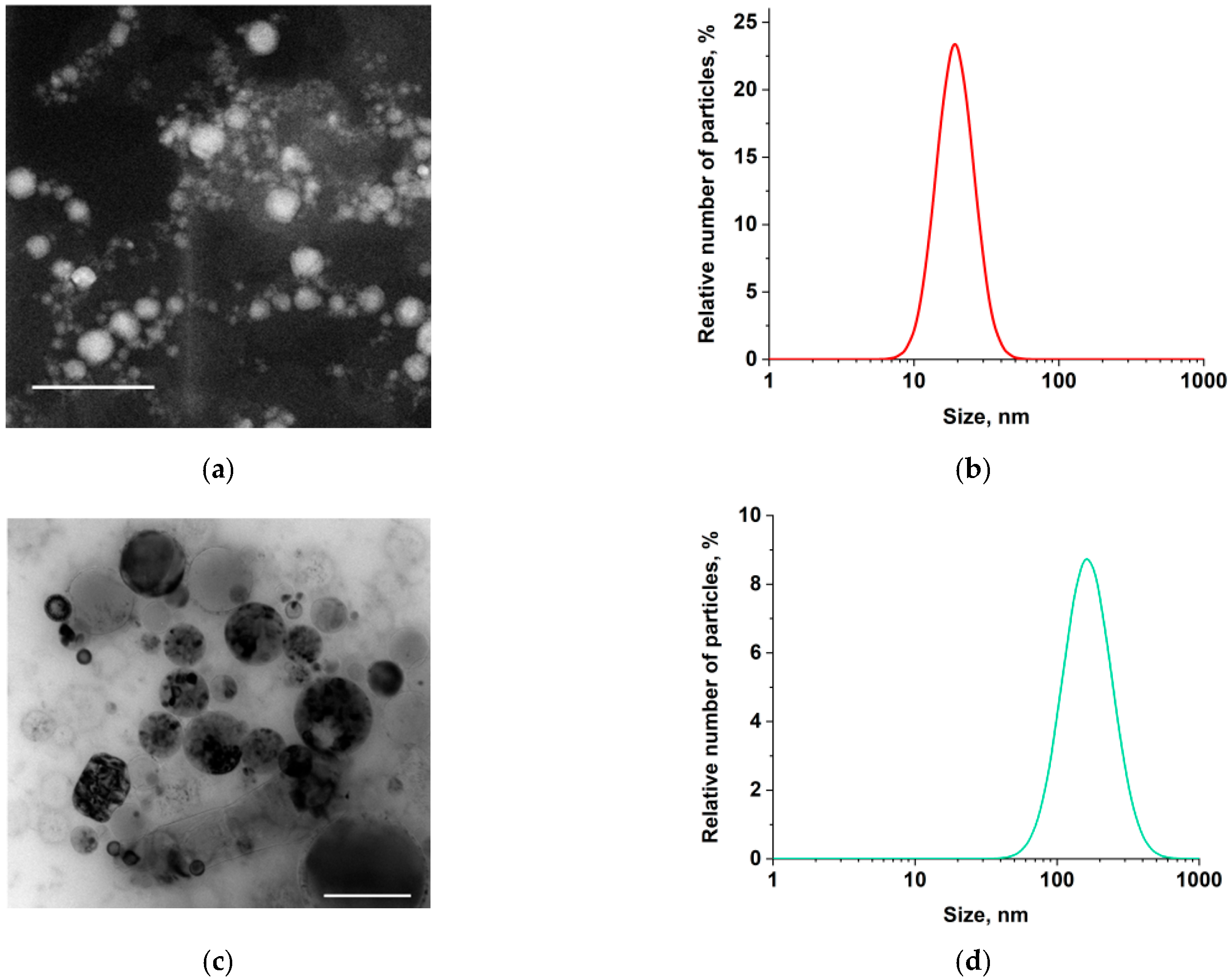
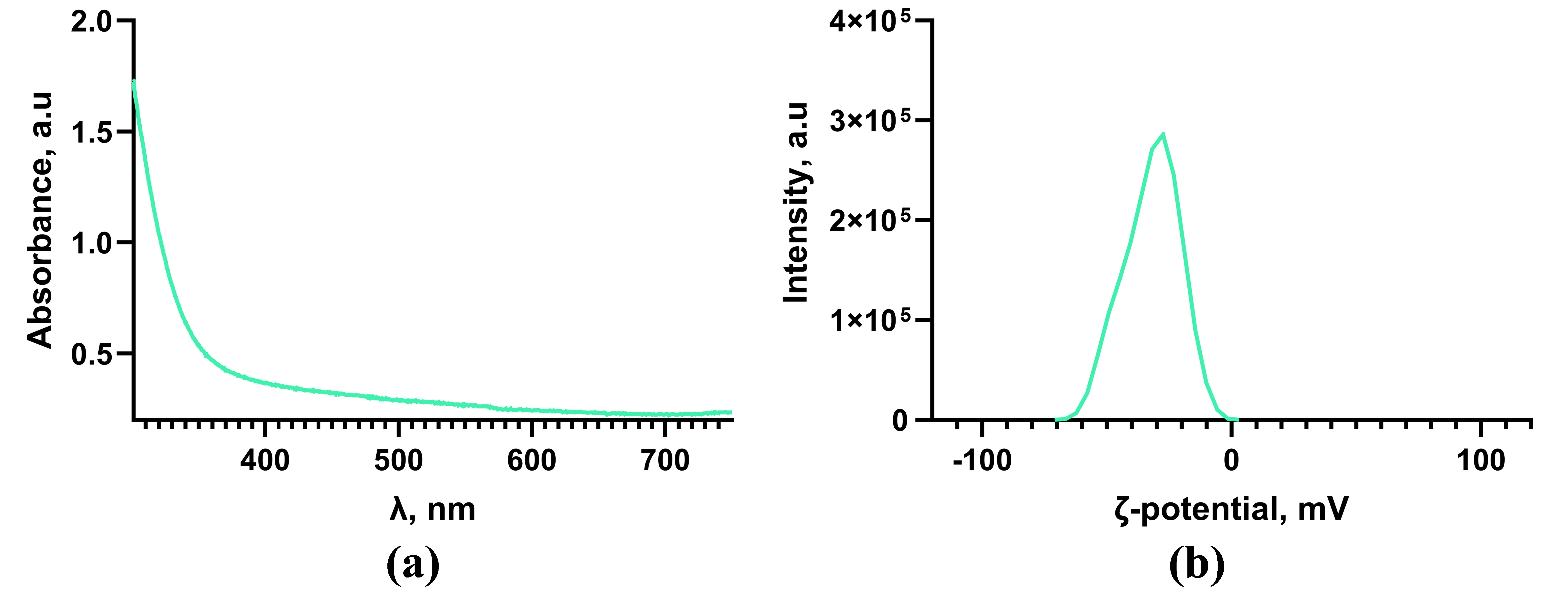
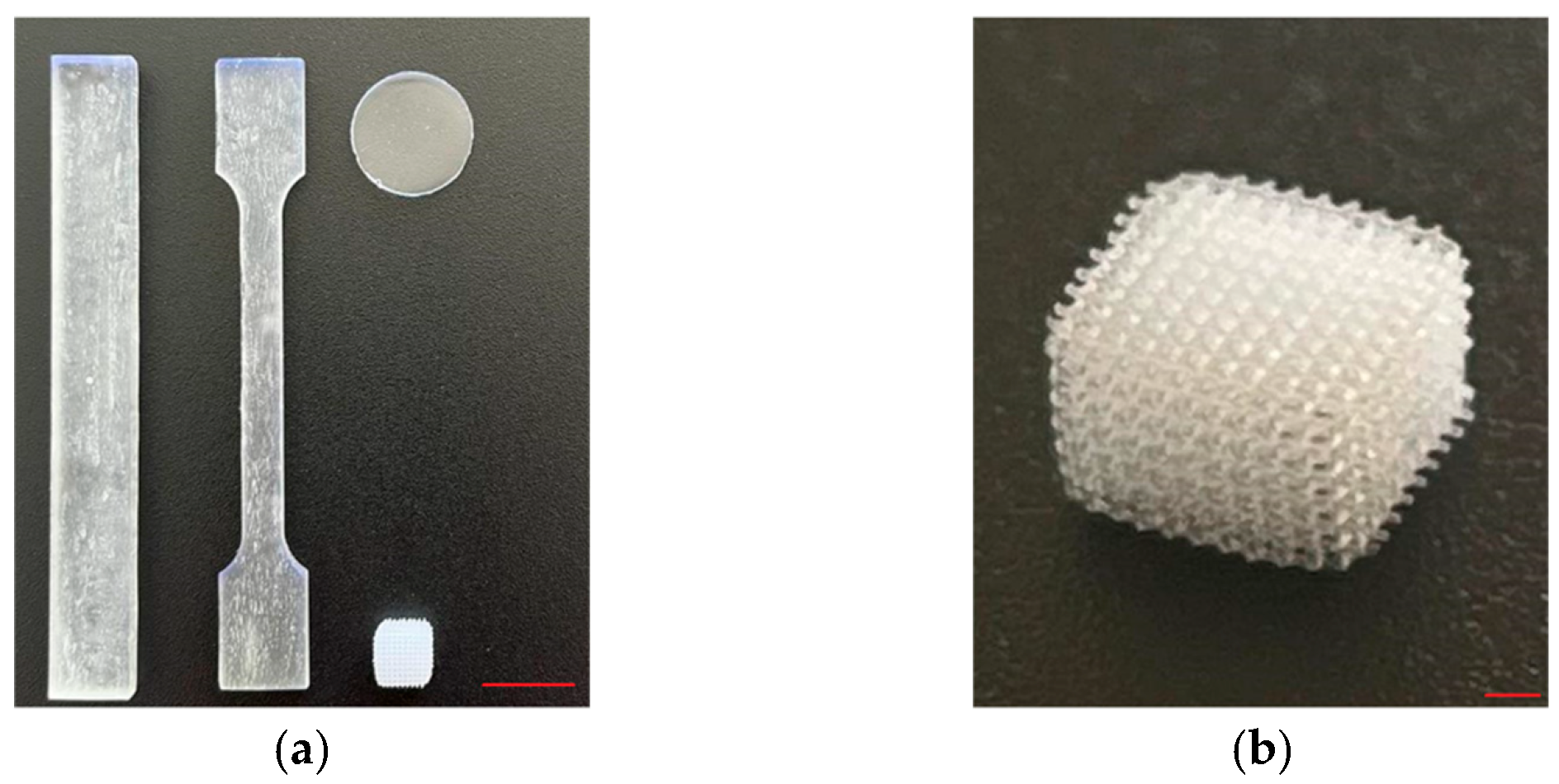
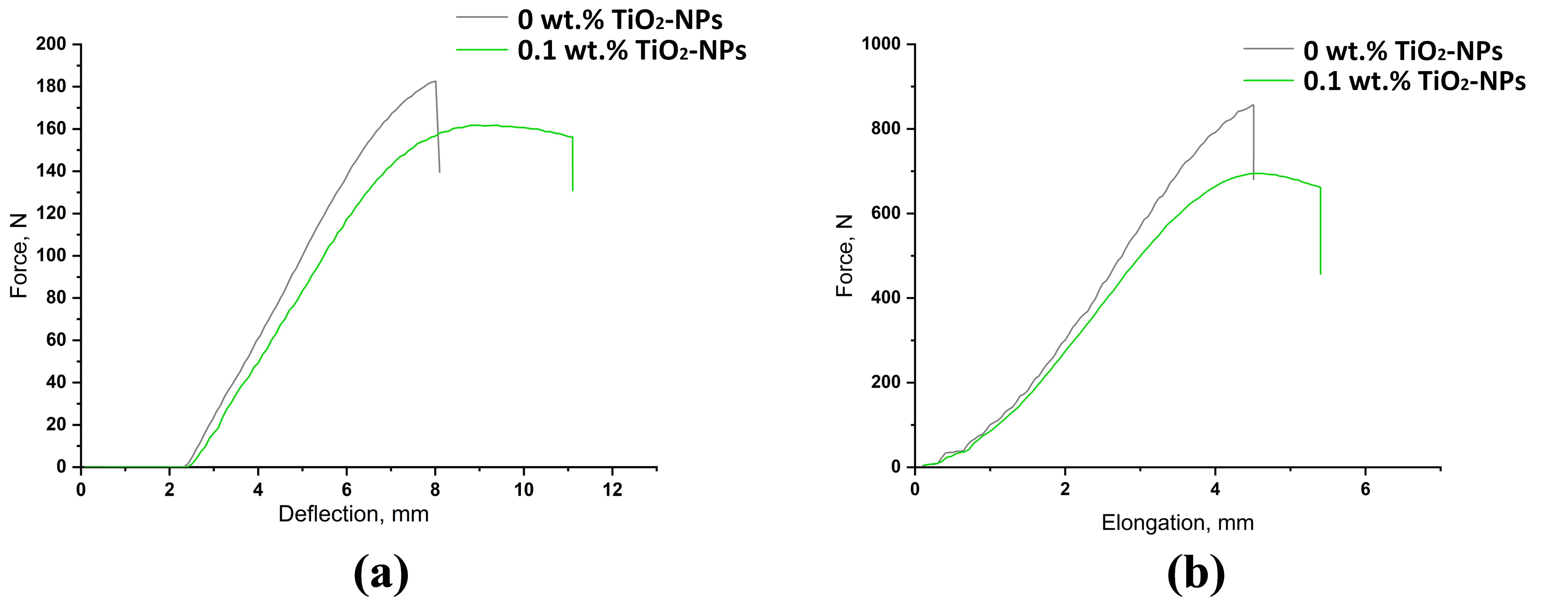
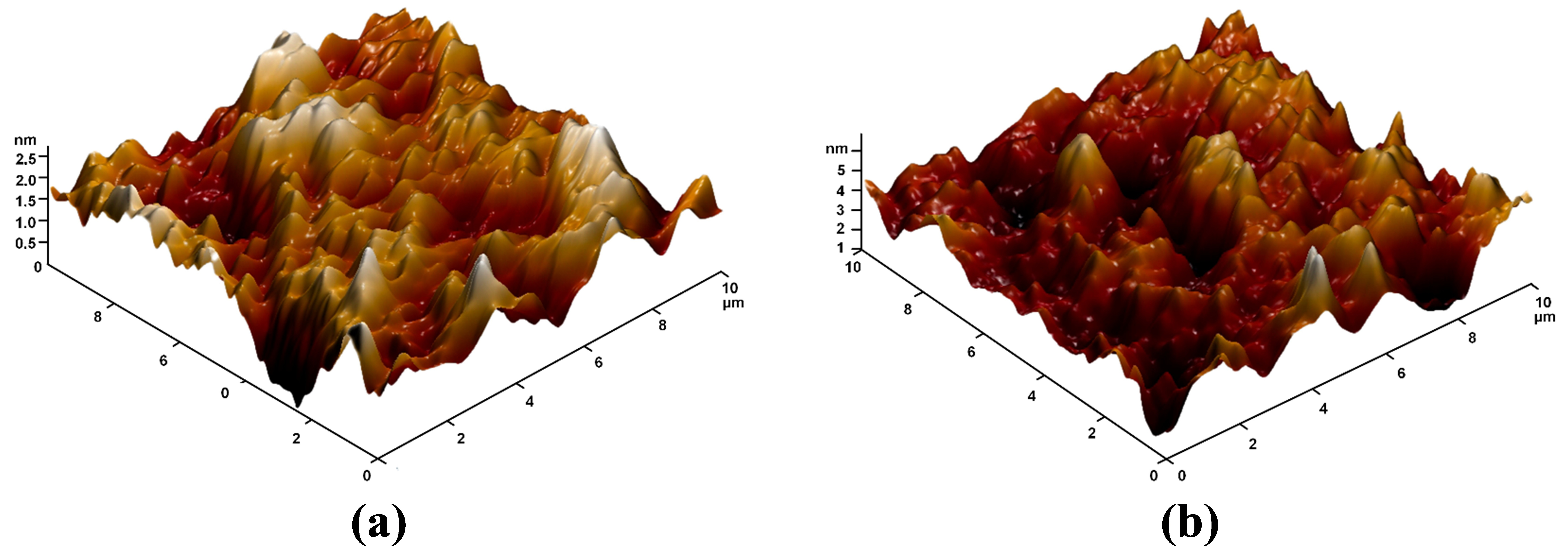
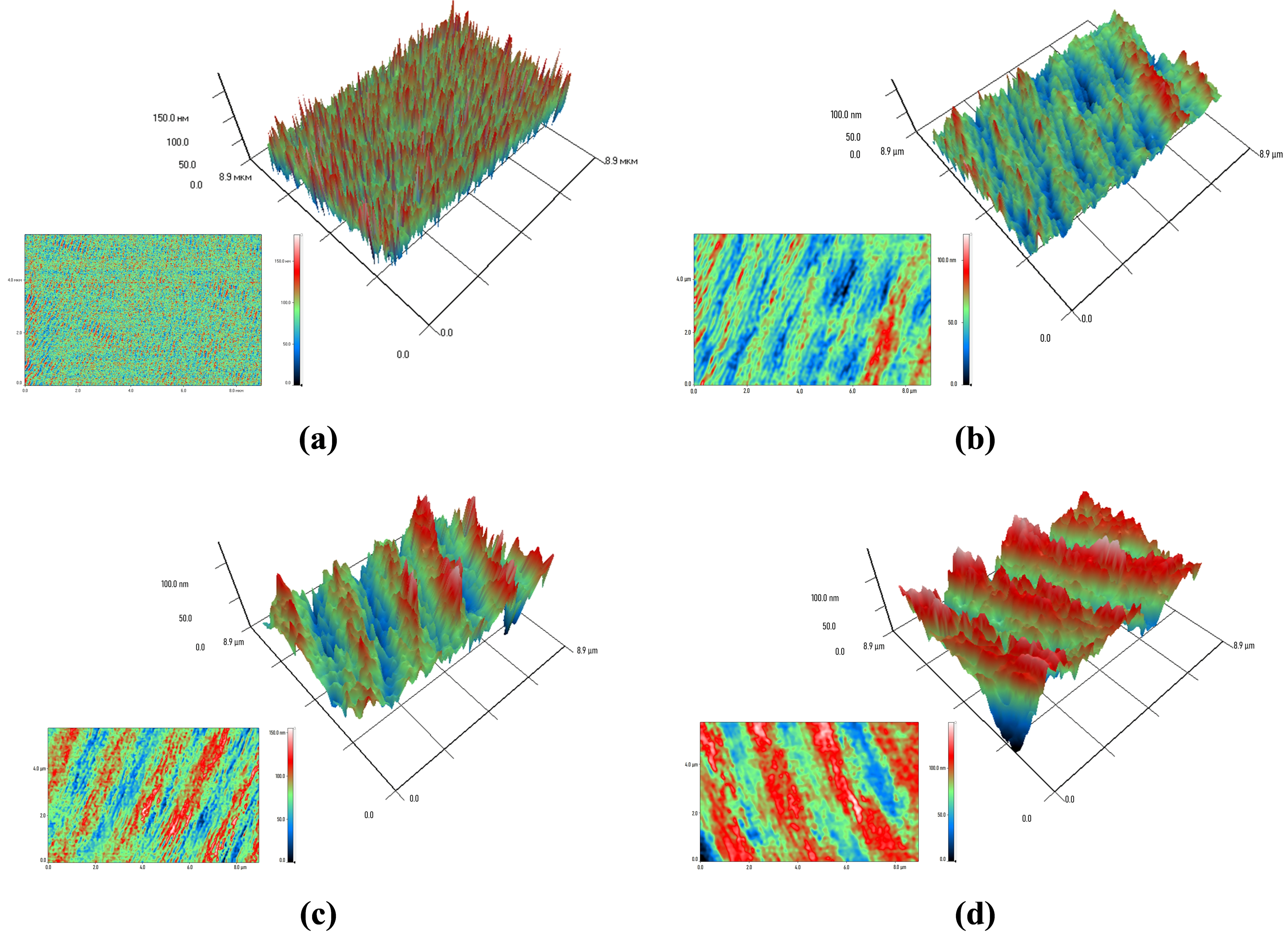
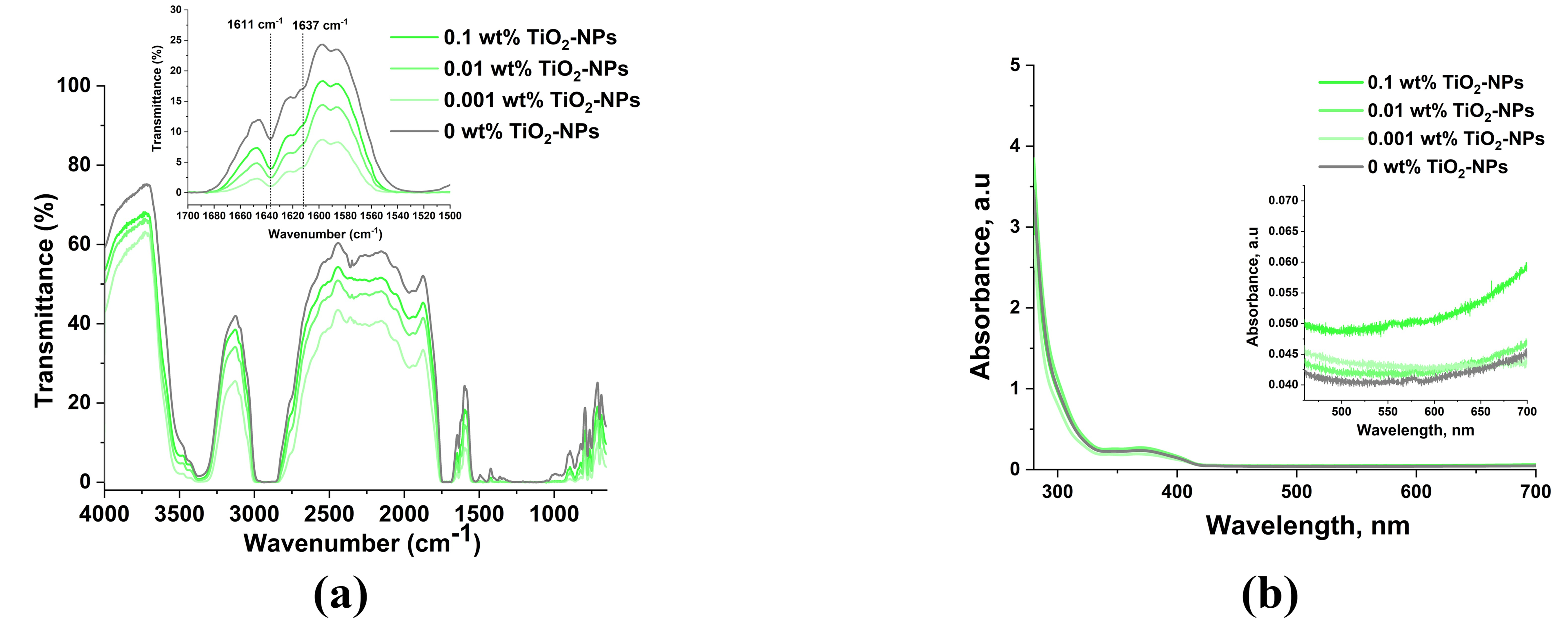
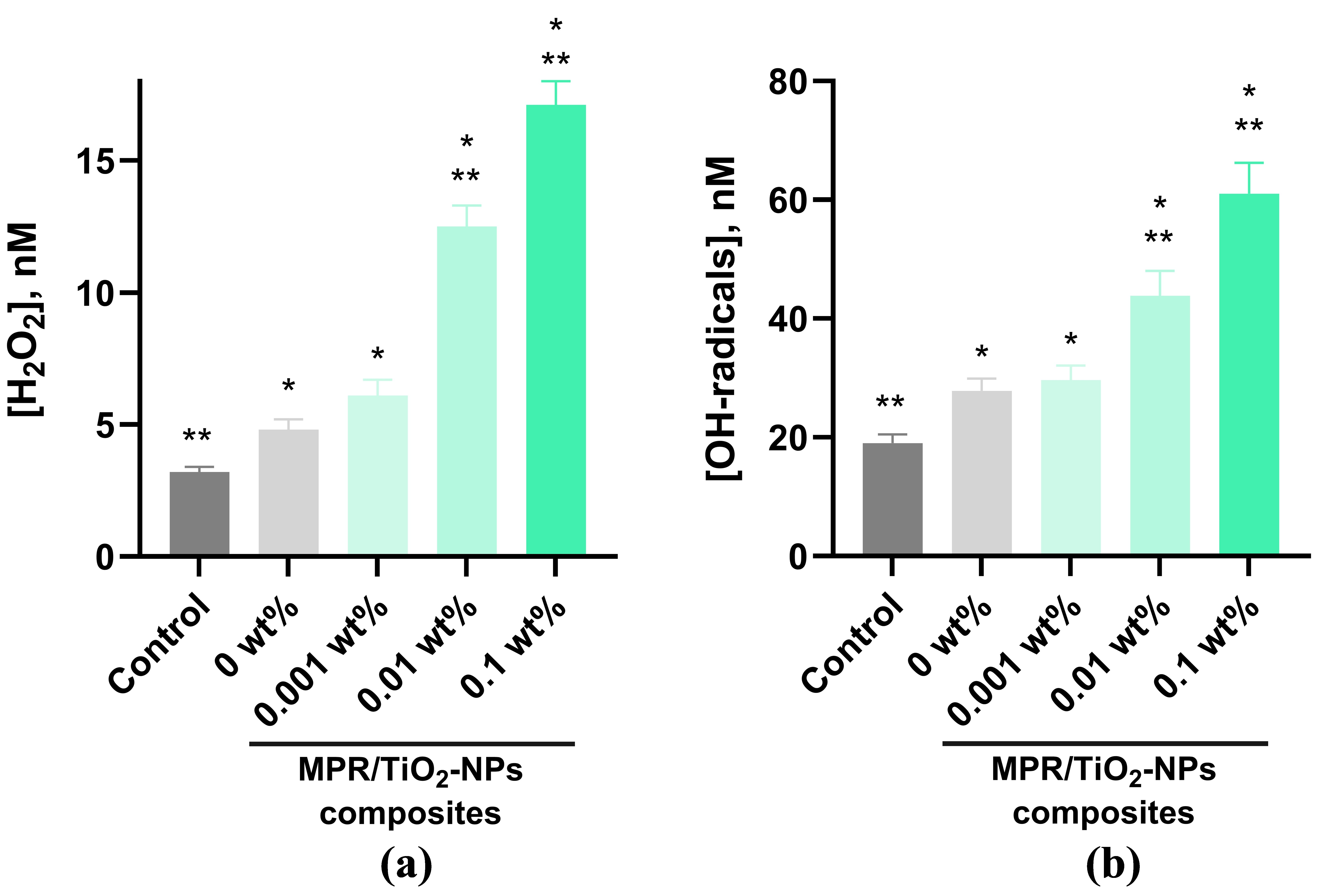
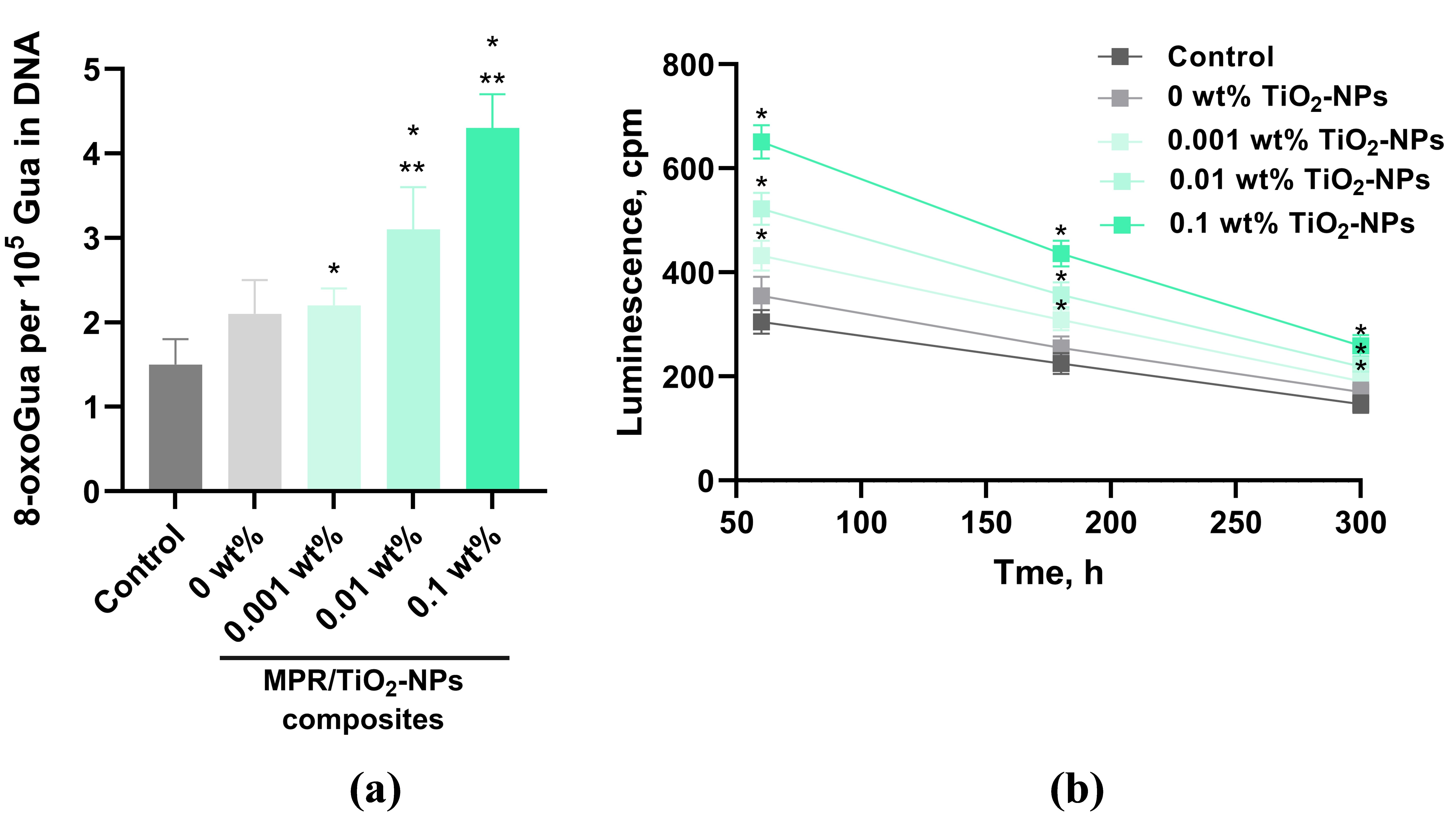
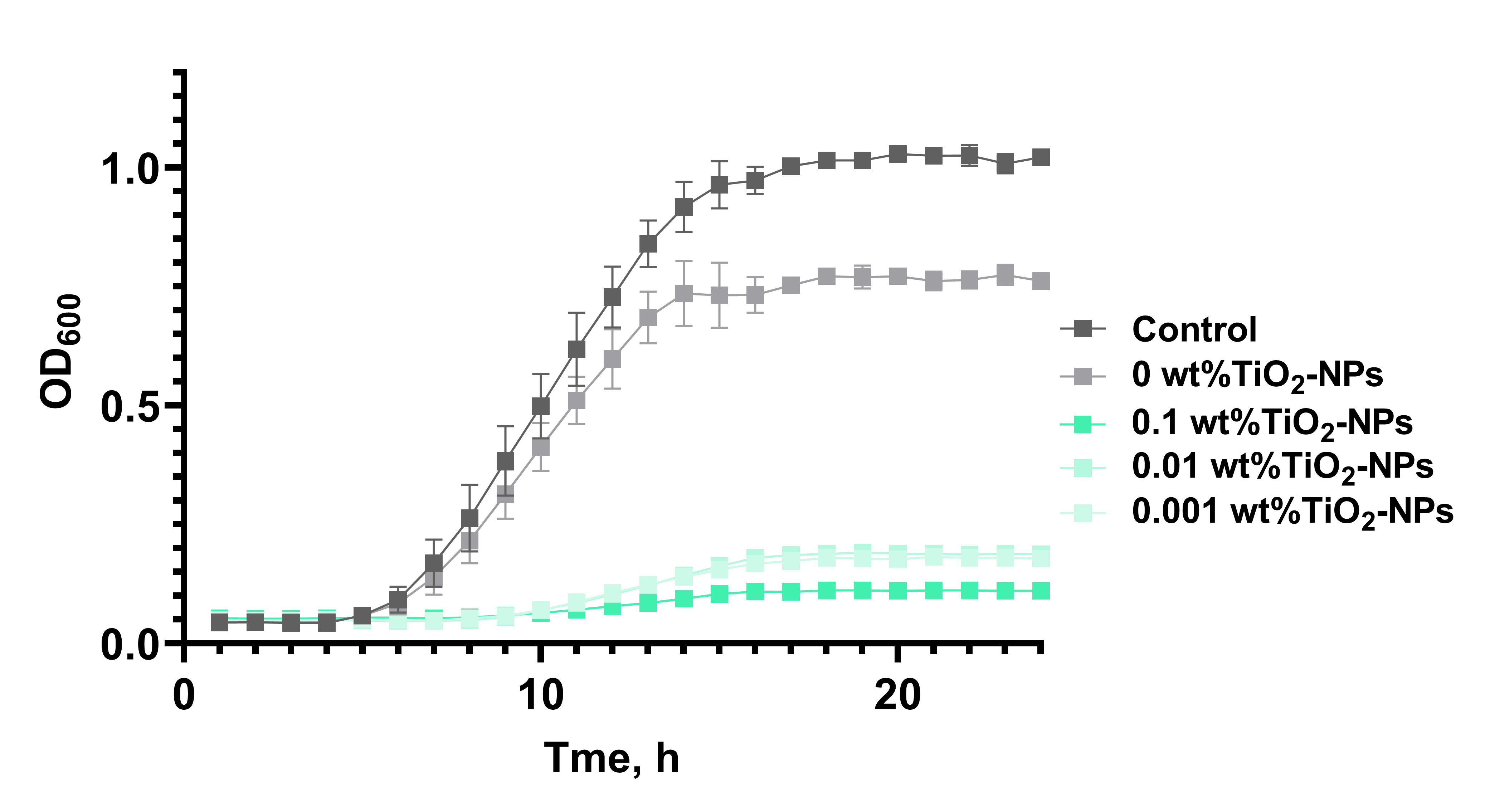
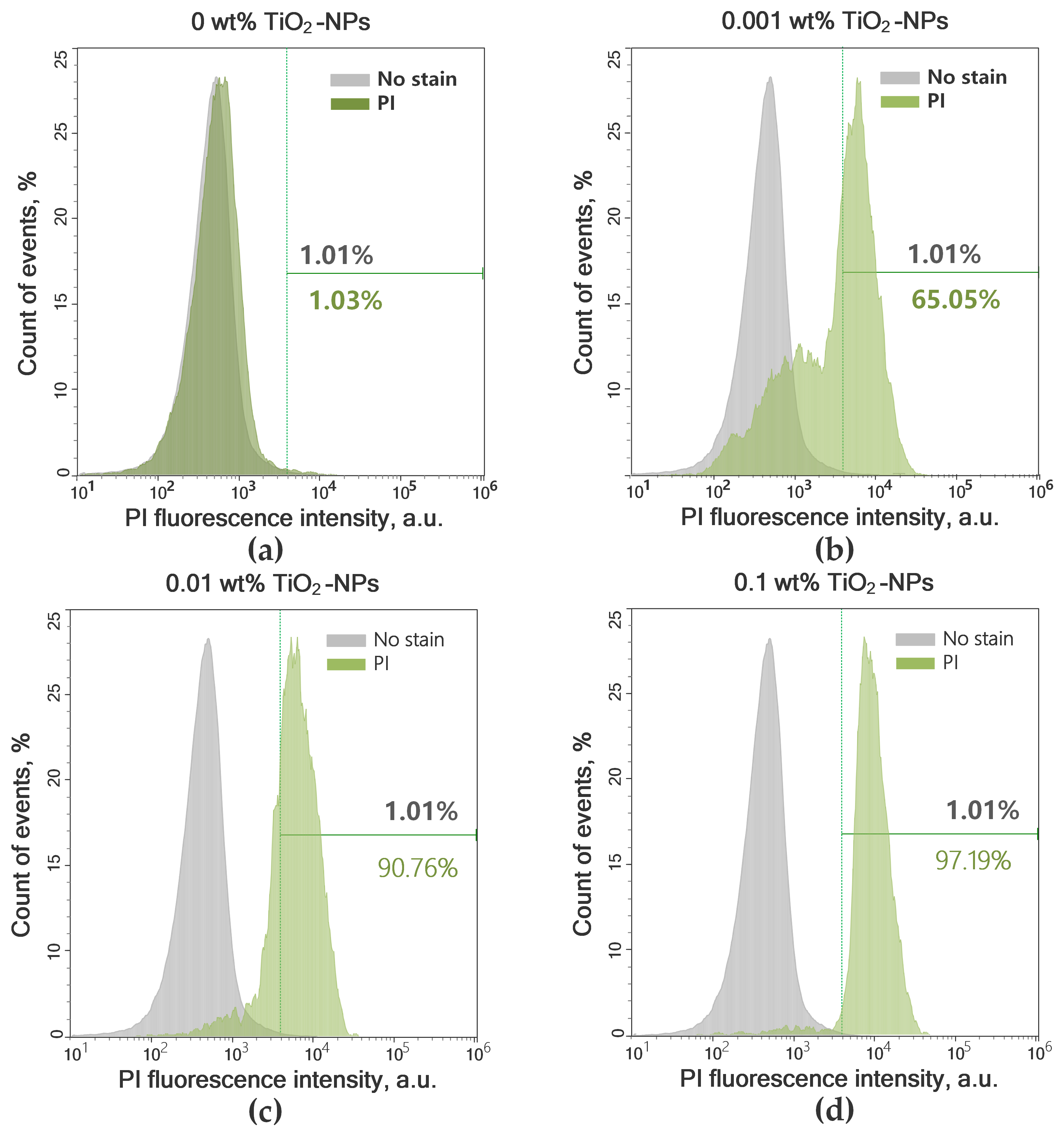
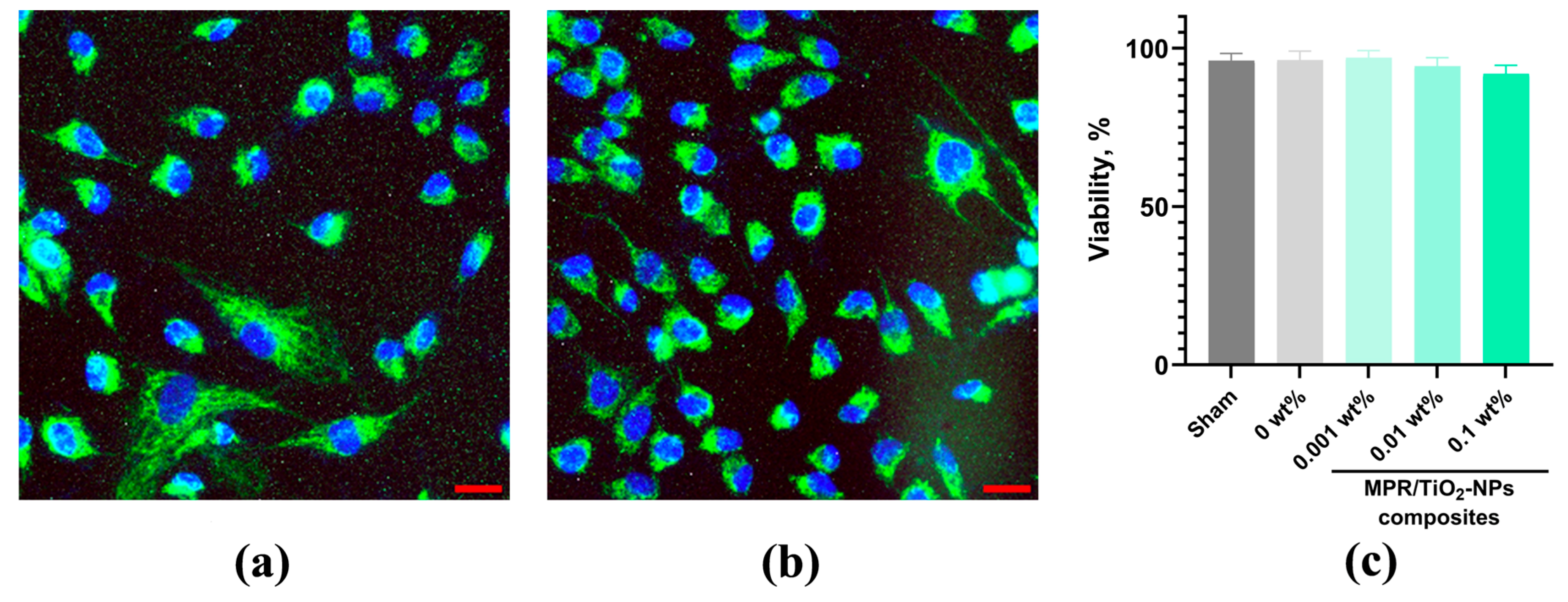
Disclaimer/Publisher’s Note: The statements, opinions and data contained in all publications are solely those of the individual author(s) and contributor(s) and not of MDPI and/or the editor(s). MDPI and/or the editor(s) disclaim responsibility for any injury to people or property resulting from any ideas, methods, instructions or products referred to in the content. |
© 2025 by the authors. Licensee MDPI, Basel, Switzerland. This article is an open access article distributed under the terms and conditions of the Creative Commons Attribution (CC BY) license (https://creativecommons.org/licenses/by/4.0/).
Share and Cite
Simakin, A.V.; Burmistrov, D.E.; Baimler, I.V.; Gritsaeva, A.V.; Serov, D.A.; Astashev, M.E.; Chapala, P.; Validov, S.Z.; Yanbaev, F.M.; Gudkov, S.V. TiO2 Nanoparticles Obtained by Laser Sintering When Added to Methacrylate Photopolymer Resin Improve Its Physicochemical Characteristics and Impart Antibacterial Properties. Inorganics 2025, 13, 233. https://doi.org/10.3390/inorganics13070233
Simakin AV, Burmistrov DE, Baimler IV, Gritsaeva AV, Serov DA, Astashev ME, Chapala P, Validov SZ, Yanbaev FM, Gudkov SV. TiO2 Nanoparticles Obtained by Laser Sintering When Added to Methacrylate Photopolymer Resin Improve Its Physicochemical Characteristics and Impart Antibacterial Properties. Inorganics. 2025; 13(7):233. https://doi.org/10.3390/inorganics13070233
Chicago/Turabian StyleSimakin, Aleksandr V., Dmitriy E. Burmistrov, Ilya V. Baimler, Ann V. Gritsaeva, Dmitriy A. Serov, Maxim E. Astashev, Pavel Chapala, Shamil Z. Validov, Fatikh M. Yanbaev, and Sergey V. Gudkov. 2025. "TiO2 Nanoparticles Obtained by Laser Sintering When Added to Methacrylate Photopolymer Resin Improve Its Physicochemical Characteristics and Impart Antibacterial Properties" Inorganics 13, no. 7: 233. https://doi.org/10.3390/inorganics13070233
APA StyleSimakin, A. V., Burmistrov, D. E., Baimler, I. V., Gritsaeva, A. V., Serov, D. A., Astashev, M. E., Chapala, P., Validov, S. Z., Yanbaev, F. M., & Gudkov, S. V. (2025). TiO2 Nanoparticles Obtained by Laser Sintering When Added to Methacrylate Photopolymer Resin Improve Its Physicochemical Characteristics and Impart Antibacterial Properties. Inorganics, 13(7), 233. https://doi.org/10.3390/inorganics13070233








